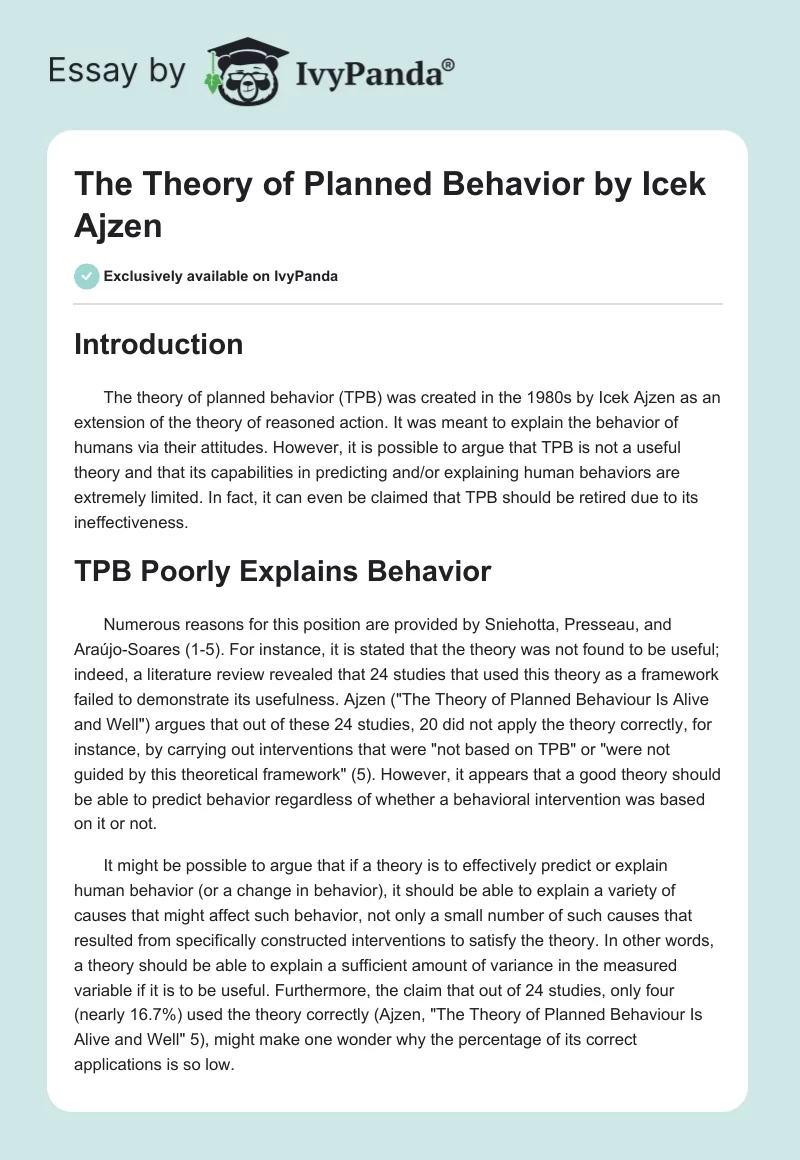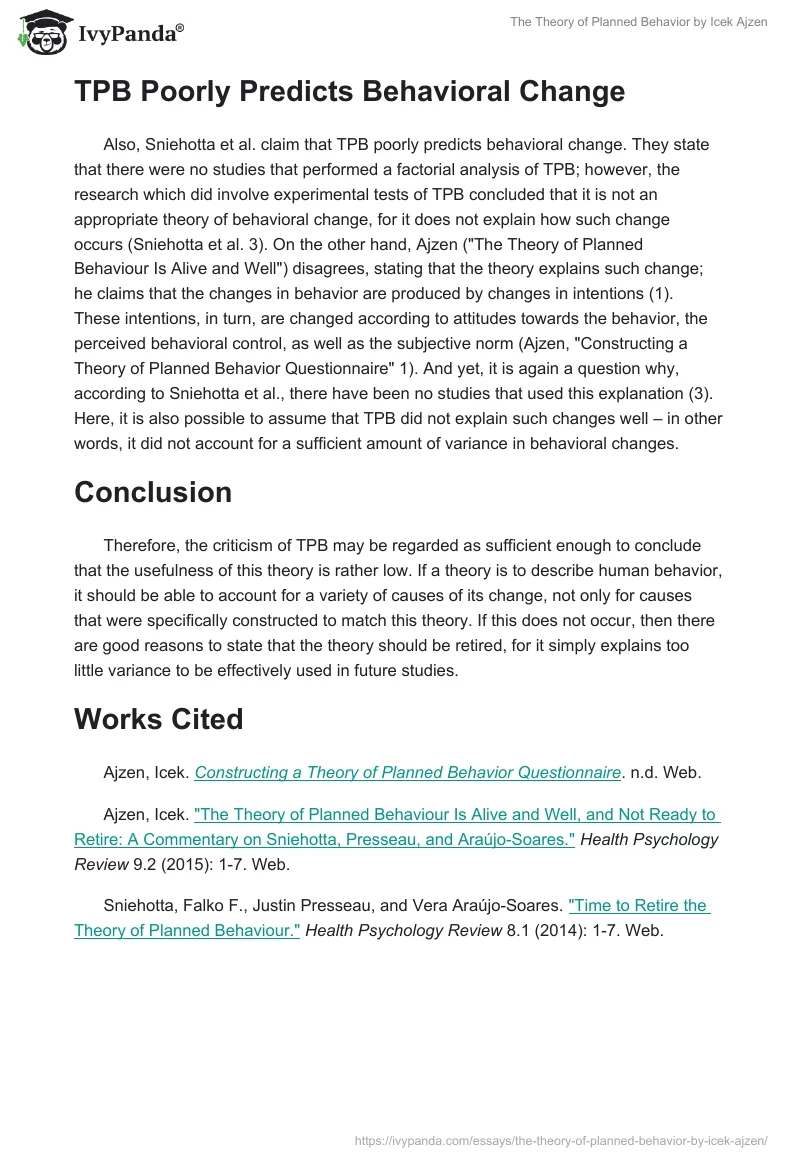Introduction
The theory of planned behavior (TPB) was created in the 1980s by Icek Ajzen as an extension of the theory of reasoned action. It was meant to explain the behavior of humans via their attitudes. However, it is possible to argue that TPB is not a useful theory and that its capabilities in predicting and/or explaining human behaviors are extremely limited. In fact, it can even be claimed that TPB should be retired due to its ineffectiveness.
TPB Poorly Explains Behavior
Numerous reasons for this position are provided by Sniehotta, Presseau, and Araújo-Soares (1-5). For instance, it is stated that the theory was not found to be useful; indeed, a literature review revealed that 24 studies that used this theory as a framework failed to demonstrate its usefulness. Ajzen (“The Theory of Planned Behaviour Is Alive and Well”) argues that out of these 24 studies, 20 did not apply the theory correctly, for instance, by carrying out interventions that were “not based on TPB” or “were not guided by this theoretical framework” (5). However, it appears that a good theory should be able to predict behavior regardless of whether a behavioral intervention was based on it or not.
It might be possible to argue that if a theory is to effectively predict or explain human behavior (or a change in behavior), it should be able to explain a variety of causes that might affect such behavior, not only a small number of such causes that resulted from specifically constructed interventions to satisfy the theory. In other words, a theory should be able to explain a sufficient amount of variance in the measured variable if it is to be useful. Furthermore, the claim that out of 24 studies, only four (nearly 16.7%) used the theory correctly (Ajzen, “The Theory of Planned Behaviour Is Alive and Well” 5), might make one wonder why the percentage of its correct applications is so low.
TPB Poorly Predicts Behavioral Change
Also, Sniehotta et al. claim that TPB poorly predicts behavioral change. They state that there were no studies that performed a factorial analysis of TPB; however, the research which did involve experimental tests of TPB concluded that it is not an appropriate theory of behavioral change, for it does not explain how such change occurs (Sniehotta et al. 3). On the other hand, Ajzen (“The Theory of Planned Behaviour Is Alive and Well”) disagrees, stating that the theory explains such change; he claims that the changes in behavior are produced by changes in intentions (1). These intentions, in turn, are changed according to attitudes towards the behavior, the perceived behavioral control, as well as the subjective norm (Ajzen, “Constructing a Theory of Planned Behavior Questionnaire” 1). And yet, it is again a question why, according to Sniehotta et al., there have been no studies that used this explanation (3). Here, it is also possible to assume that TPB did not explain such changes well – in other words, it did not account for a sufficient amount of variance in behavioral changes.
Conclusion
Therefore, the criticism of TPB may be regarded as sufficient enough to conclude that the usefulness of this theory is rather low. If a theory is to describe human behavior, it should be able to account for a variety of causes of its change, not only for causes that were specifically constructed to match this theory. If this does not occur, then there are good reasons to state that the theory should be retired, for it simply explains too little variance to be effectively used in future studies.
Works Cited
Ajzen, Icek. Constructing a Theory of Planned Behavior Questionnaire. n.d. Web.
Ajzen, Icek. “The Theory of Planned Behaviour Is Alive and Well, and Not Ready to Retire: A Commentary on Sniehotta, Presseau, and Araújo-Soares.” Health Psychology Review 9.2 (2015): 1-7. Web.
Sniehotta, Falko F., Justin Presseau, and Vera Araújo-Soares. “Time to Retire the Theory of Planned Behaviour.” Health Psychology Review 8.1 (2014): 1-7. Web.


